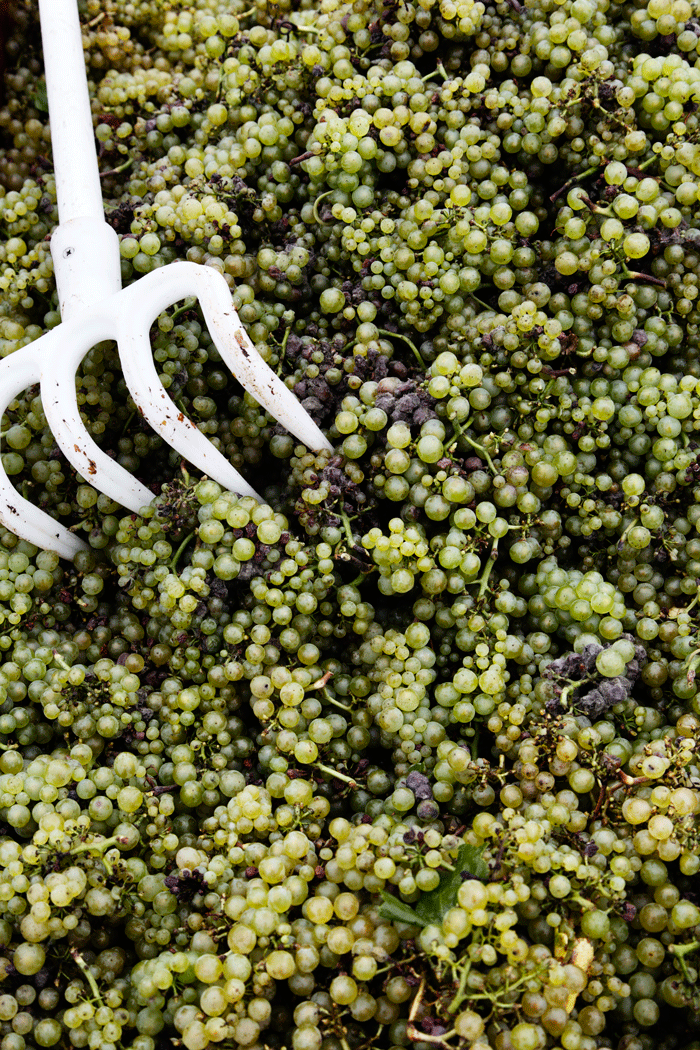Tasting Burgundy (day two)
Author: David Jones
Domaine Bruno Clavelier
A visit to Bruno Clavelier at his Vosne Romanée Domaine can feel more like a school geology lesson than a wine tasting: the first thing you see as you walk through the door is a table strewn with stones and rocks, specimens which Bruno has collected to demonstrate the different types of soil and bedrock in his selection of vineyards throughout the Côte de Nuits, and in Corton. As we tasted each of the wines, and appreciated the differences in styles, Bruno explained how each soil type contributed to the characteristics. Not only was it a great educational experience, but it was also a revelation to discover the quality of his wines. Bruno has some of the best Premiers Crus of the Côte de Nuits, including Aux Brûlées and Aux Beauxmonts in Vosne Romanée, Les Corbeaux in Gevrey-Chambertin and Combe d’Orveau in Chambolle Musigny.
Domaine Jean Grivot
A short walk through the streets of Vosne Romanée took us to our next rendezvous with Etienne Grivot at the family Domaine which he has been running since the early 1980s. I have been fortunate to visit a few times, but in tasting Etienne’s range of 2012s it was clear why his wines have recently been receiving especially high praise and ratings. His top Premiers Crus and Grand Crus can stand alongside many of the other famed names of the village. His Bourgogne Rouge and village Vosne Romanée also show an impressive concentration of fruit, and stylish texture for wines of their level. To conclude our tasting, Etienne generously gave us the opportunity to taste three different vintages of his sublime Richebourg: 2005 to start with, then 1998 (the last bottle in his cellar), and finally, a hauntingly beautiful bottle of the 1987, his first vintage.
Domaine Chantal Remy
With appetites sharpened by the morning tastings, the promise of lunch at Domaine Chantal Remy in Morey Saint Denis, with Chantal herself and her son Florian was, extremely welcome. We were hosted at their family home, where, as Florian showed us, there is a special new development.
Behind the house there once stood a rose garden and a tennis court: Chantal and Florian have planted vines. When you stand in the small plot and realise that over the wall to one side is Clos du Tart Grand Cru, and over the other Clos du Lambrays Grand Cru, you can see why. The wine is named Clos des Rosiers, after the previously planted beds of roses, and Chantal has applied for it to be classified as Premier Cru. We tasted the 2011 at the start of our lunch: it’s a delightful new wine, which will be a pleasure to get to know. The Domaine is also notable for its tradition of holding back a quantity of bottles from each year in their cellars, to be able to offer older vintages for sale. So at dinner were able to enjoy a superb trio of 2002 Chambolle Musigny 1er Cru, 1998 Clos de la Roche and 1996 Latriciѐres Chambertin.
Domaine de Chateau de Puligny and Domaine de Montille
These two Domaines are linked by the management of Etienne de Montille, and a quick visit to each rounded off our second day in Burgundy. In 2012, as ever, Chateau de Puligny is a source of excellent value wines which offer classic examples of the three great white wine villages of Burgundy – Meursault, Puligny and Chassagne. Not to be missed though is the wine from the lesser known village of Saint Aubin, the Premier Cru En Remilly. It is a very stylish white Burgundy, with excellent intensity, some minerality, and lovely perfumed fruit giving a touch of finesse.
At Domaine de Montille we tasted with American winemaker Brian Sieve who has been working alongside Etienne de Montille for the last few vintages. Brian is extremely knowledgeable and articulate on the Burgundian terroir, and the developments he and Etienne are making suggest this is a Domaine to watch. Throughout the range of wines there was hugely appealing sense of freshness and vibrancy, to match with some impressive density of fruit. It is of course a long standing Domaine, with holdings in some of the finest vineyards in the Côte de Beaune, as well as the Clos Vougeot and Vosne Malconsorts in the Côte de Nuits. The standouts for me were a serious, weighty but well-balanced Pommard Rugiens, and a rich, powerfully structured Corton Clos du Roi.
Domaine Clos de Tart
On sunny late morning, this historic Domaine was a magical place to bring our Burgundy tour to a close. The beautiful old buildings of the Domaine date back to the 16th century. In Sylvain Pitiot, the manager of Clos de Tart since 1995, we found someone who has been uncompromisingly meticulous in successfully establishing this as one of Burgundy’s greatest wines. He has an impressively studious air, perfectly befitting his other achievements as co-creator of the wonderful geographical vineyard maps of the Côte de Beaune and the Côte de Nuits.
He has put this studious approach into practice at the Domaine in determining and mapping out the complex geology of the Clos du Tart, and vinifying separately each of the distinctive plots he discovered within the vineyard. We had the pleasure of a walk amongst the vines. After the problems of recent vintages, which have severely reduced the quantity of wine produced throughout the region, it was pleasing to end our tour with the hope that this year may bring a return to a promising sized crop.
Read part one of David’s Burgundy report.



